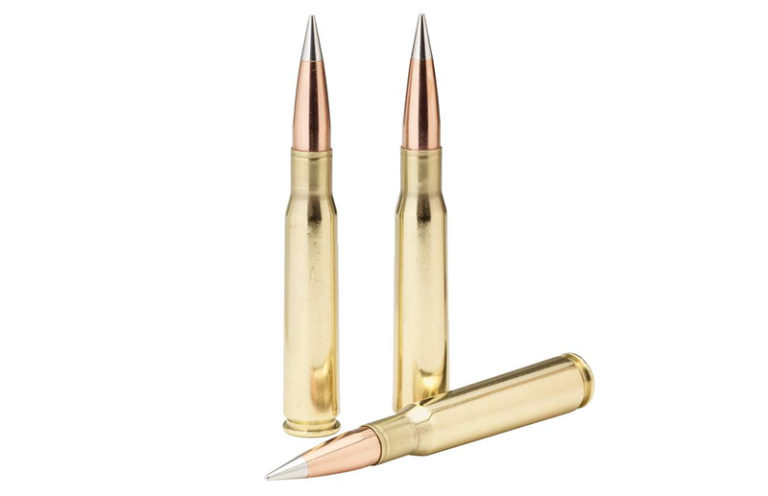
Whether you’ve just bought yourself a .50-cal. rifle or are considering getting one, here's the best .50 BMG ammo on the market.
For most, .50 BMG is a niche cartridge with little practical use. Regardless, many still enjoy shooting it, even if it’s for no other reason than to experience its awesome power. Others appreciate it for some of its lesser-known ballistic qualities.
We're going to go over what kind of loads are out there and what they're useful for, the cartridge’s general utility and a selection of .50 BMG ammo to fit several purposes and budgets.
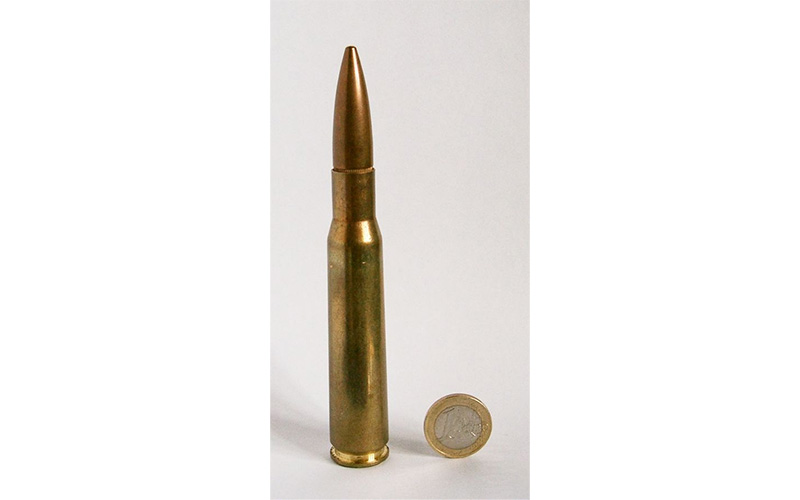
A Brief Guide To .50 BMG and .50 BMG History
.50 BMG, or .50 caliber Browning Machine Gun (aka 12.7x99mm NATO and .50 Browning), was developed for use in a heavy machine gun. The initial design work was done by John Moses Browning at the request of Gen. John “Blackjack” Pershing shortly after the end of World War I.
The idea was to have a heavier machine gun that fired ammunition heavy and powerful enough to penetrate the armor of the day, primarily tanks that entered common use in WWI. Pershing specified a caliber of 0.50 and a muzzle velocity of 2,700 feet per second based on the German 13.2mm TuF (Tank und Flieger, “tank and aircraft”) and 11mm Vickers rounds.
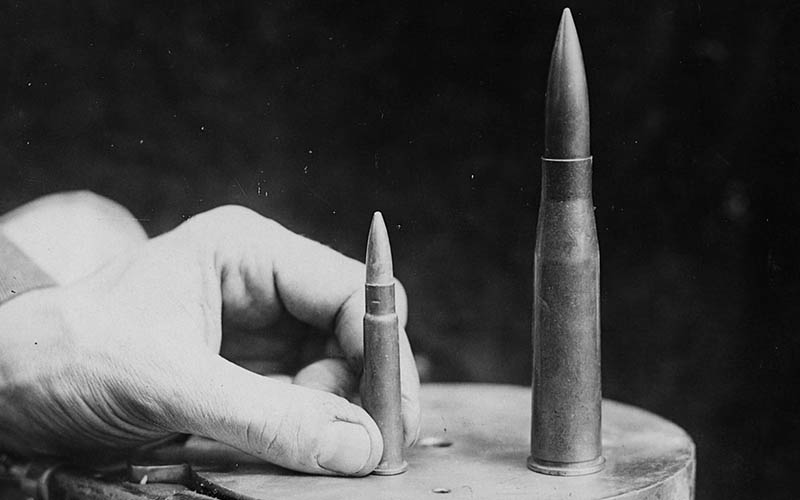
Browning worked on the gun while Winchester developed the ammunition. You might have heard that .50 BMG is a “scaled-up .30-06,” and in a lot of regards…it is. The reason why is the gun that Browning designed for it.
His idea was to scale up the M1917 .30-06 water-cooled machine gun— which he did—and the weapon was adopted as the M1921. The M1921 worked, but it was still a large, heavy, water-cooled belt-fed machine gun and as such was desperately impractical.
Winchester eventually was able to achieve 2,750 fps with a 660-grain FMJ bullet. The armor-piercing load was proven capable of penetrating 1 inch of rolled steel at 200 meters and 0.75 inches at 500 meters.
The US Army knew the M1921 wasn't sustainable, so it began the process of replacing it. Unfortunately, Browning died in 1926, and the design work was picked up by others, eventually culminating in the M2 Browning machine gun.
Further load development besides standard ball ammo includes multiple iterations of armor-piercing projectiles, incendiary, incendiary armor piercing, tracers, sabot light armor piercing and sniper rounds.
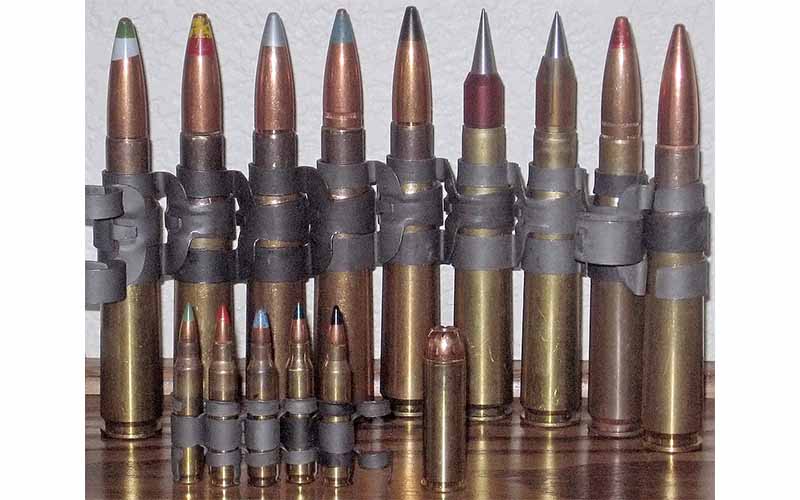
Stay Away From SLAP Rounds
Just like AR shooters have what we'll call a strange fondness for green-tip 62-grain ammunition (which is rarely very good, can cause feeding issues and can actually damage your rifle in some cases), some .50 BMG shooters are fascinated with SLAP tracers.
Sabot Light Armor Penetrating rounds are very hard to come by on the commercial market. Most lots of it are either very old (and therefore its condition and safety for use are unknown) or are counterfeits, and the problems that beset Bubba's Wicked Hot Handloads in other calibers are certainly present with .50 BMG ammunition as well.
There's nothing wrong with firing AP to blow up bowling balls or tracers because you just want to, but a look at Kentucky Ballistics’ throat may help you reconsider. The YouTuber had his Serbu RN-50 detonate on film thanks to a SLAP round.
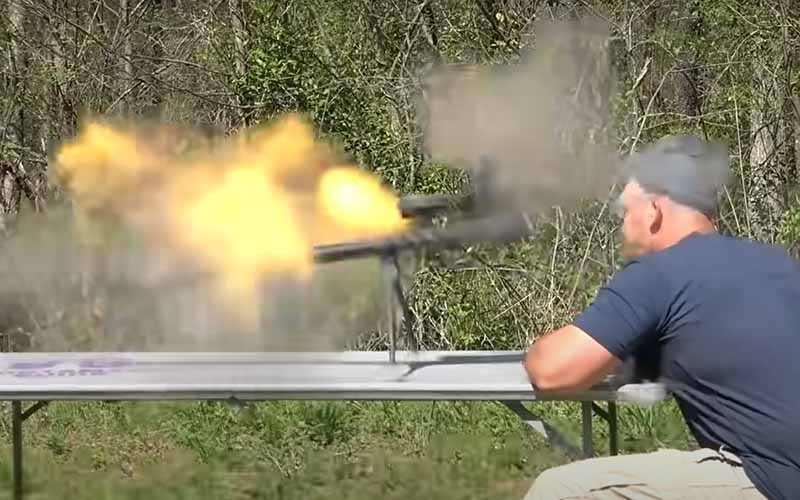
The .50 BMG Blossoms Into A Long-Range Cartridge
One of the best-known early uses of the .50 BMG as a sniper round was in the Vietnam War when Sgt. Carlos Hathcock mounted a scope on an M2 and successfully made a shot at 1.3 miles.
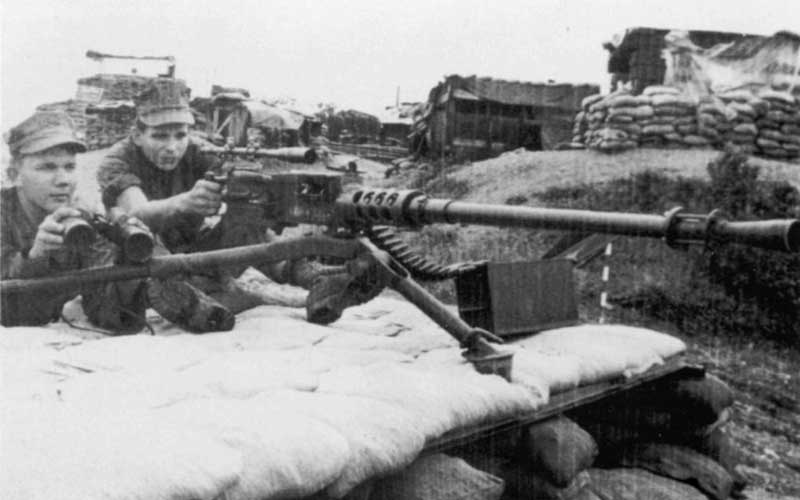
In any event, the idea began to dawn on the world's militaries that .50 BMG was maybe good for more than just shooting planes and light armored vehicles. Over time, it was also adopted for long-range sniping and anti-materiel/anti-vehicle use where it has since excelled at the role.
In fact, almost all the records for long-range sniper kills at distances greater than a mile were accomplished with a rifle chambered in .50 BMG.
And it is so darned good at it because of an insane ballistic coefficient. The long bullet length (up to 2.27 inches) and ample mass give a .50 BMG load a G1 ballistic coefficient anywhere from 0.7 to over 1.0.
In other words, it slices through the air like a hot knife through butter, losing velocity at a slower rate than almost any other cartridge. It can even stay supersonic to 3,500 yards depending on the load, and at that distance still carries more energy than a 5.56mm M193 bullet does at the muzzle.
Here's a trajectory table for Hornady's A-Max load of .50 BMG ammo, which uses a 750-grain bullet at a nominal 2,910 fps and a G1 BC of 1.05:
(All calculations made using ShootersCalculator with a 1.5-inch sight height, a 10 mph 90-degree crosswind and no corrections for atmosphere)
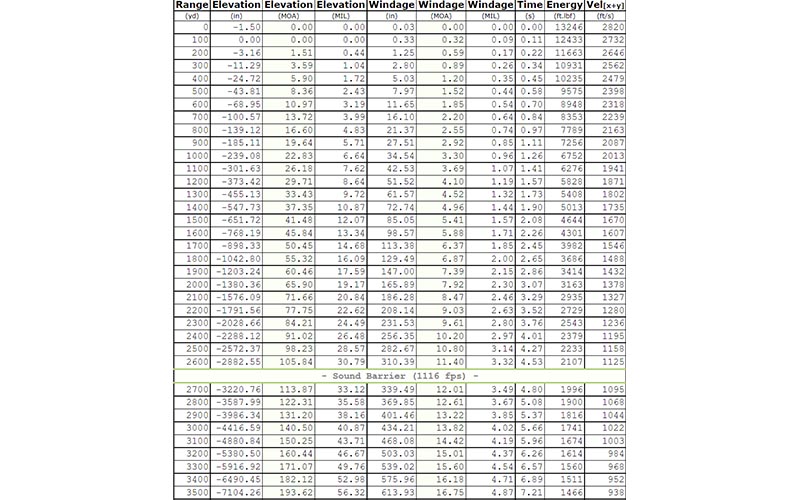
As you can see, it drops at a rate not too dissimilar to other bullets…but loses less than 100 fps per 100 yards. There are few cartridges in the same league when it comes to long-range shooting, which is why it was used as a sniper round in the GWOT as well as its typical anti-material roles. If you want to reach way out and touch something, it's one of the best tools for the task.
Reasons To Own A .50 BMG Rifle
Is there a practical reason for owning one besides shooting bowling balls or shooting steel at a really, really, really, really long way out?
No, not really. It's one thing if you're the armorer of a SWAT team in an area where vehicle defeat is a potential concern, but that obviously doesn’t apply to most shooters.
While it would ostensibly be the dangerous game cartridge to end all dangerous game cartridges, the sheer size and weight of the rifles—the lightest probably being the Serbu RN-50 which comes in at 12.75-pounds—make it a non-starter as a weapon you'd fire free-hand or trek with for long distances.
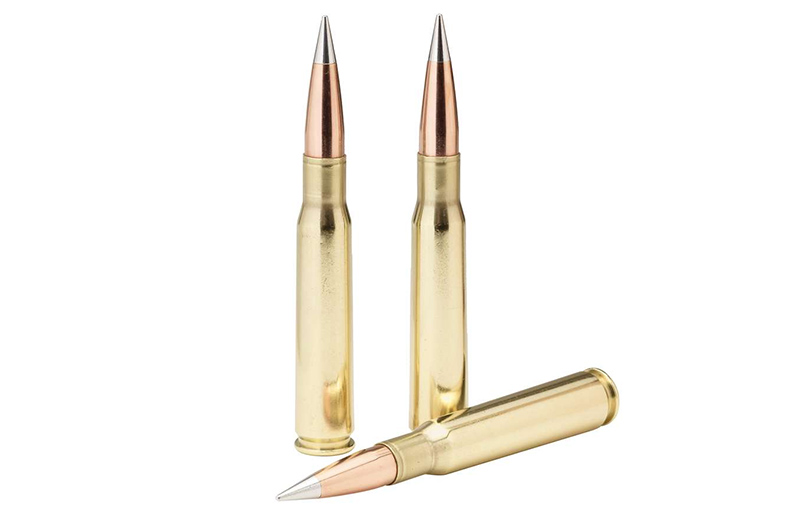
Consider also that shooting an elk at 3,500 yards also means you have to walk 3,500 yards to start processing it and then start hauling it out. That would be awful.
That also presumes you'd even be able to make an ethical hit on an animal at that range. To break that down, rest assured buying a black Stratocaster will not make you sound like Dave Gilmour.
With that all said…who cares? Practicality isn't everything. If you want a .50 BMG rifle just because…by Jove, go ahead and do it and be happy. Besides, on the off chance that the country goes the way of Mad Max, it may prove itself incredibly useful against all those up-armored muscle cars.
5 Best Loads Of .50 BMG Ammo
Lake City M33 Ball
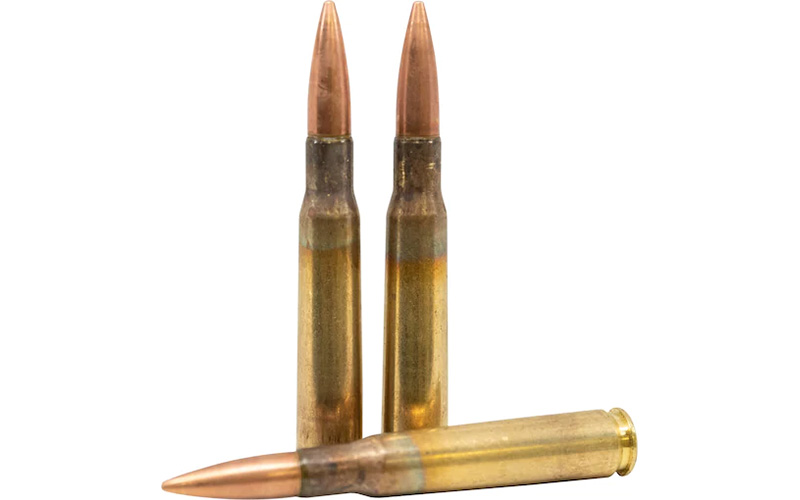
There is no such thing as cheap range ammo in .50 BMG. There is only less exorbitantly expensive .50 BMG ammo. One of the least costly is Lake City's M33 ball load, military surplus from the lots of ammunition that Lake City manufactures for the government.
M33 ball is a 660-grain FMJ bullet with a steel core and a flat lead base, nominally loaded to 2,910 feet per second. M33 ball is capable of barrier defeat, but the principle selling point is the cost. You can find it online for somewhere between $415 to $450 for 150 rounds, just under $3 per.
That's about as inexpensive as it gets.
Hornady Match Ammunition 750-Grain A-Max .50 BMG
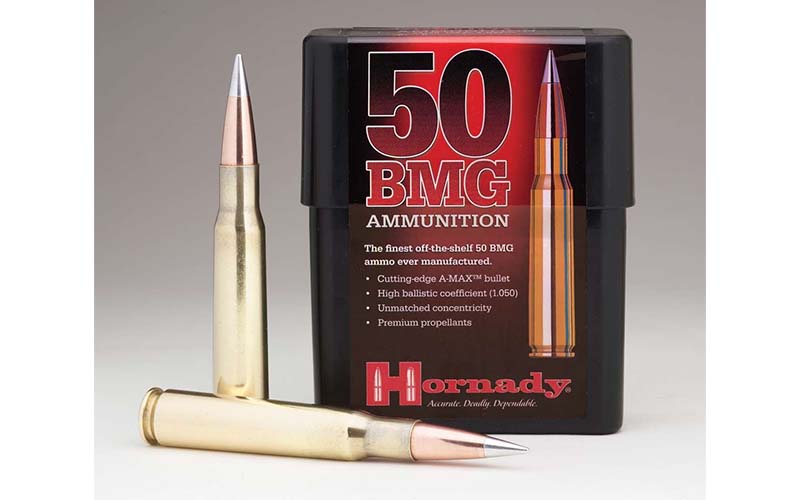
Hornady's A-Max 750-grain load is one of the best long-range loads available, with a G1 BC of 1.05 (see above for the drop table). If you want to reach out and touch something, this is about as good as it gets.
The A-Max load is a ballistic-tipped hollow point boat tail, with a 750-grain projectile loaded to an advertised 2,820 feet per second and 13,241 foot-pounds of energy at the muzzle. If ringing steel a mile away is what you want to do, there aren't too many better choices.
It's gonna cost you, though! MSRP ranges from about $70 to $90 per box of 10.
PMC 660-Grain FMJBT
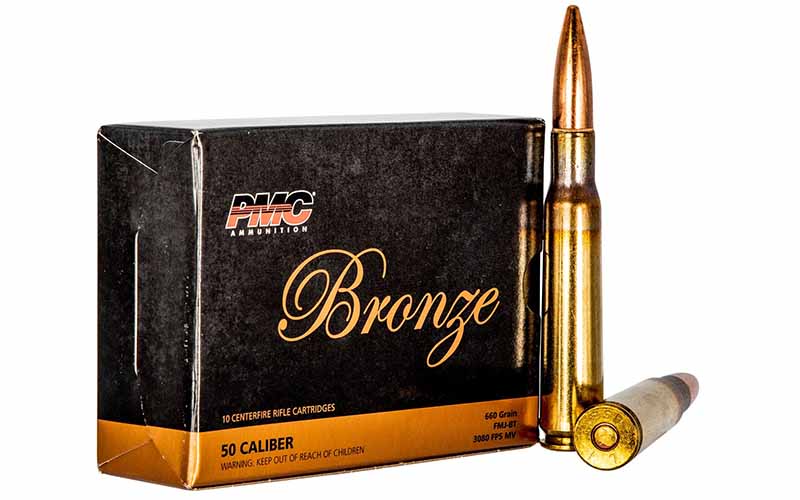
One of the most common types of ammunition in .50 BMG is ball ammunition, and PMC's 660-grain FMJBT (an M33 ball clone) is another common box and brand that won't leave your finances for dead.
It's advertised as being loaded to 3,080 feet per second and 13,688 foot pounds at the muzzle. Boxes of 10 to 200 are common, usually with a cost of somewhere between $3.25 to $3.75 per round. A little more expensive than Lake City surplus, but it has a little more oomph behind it too.
Freedom Munitions API 647 Grain FMJ
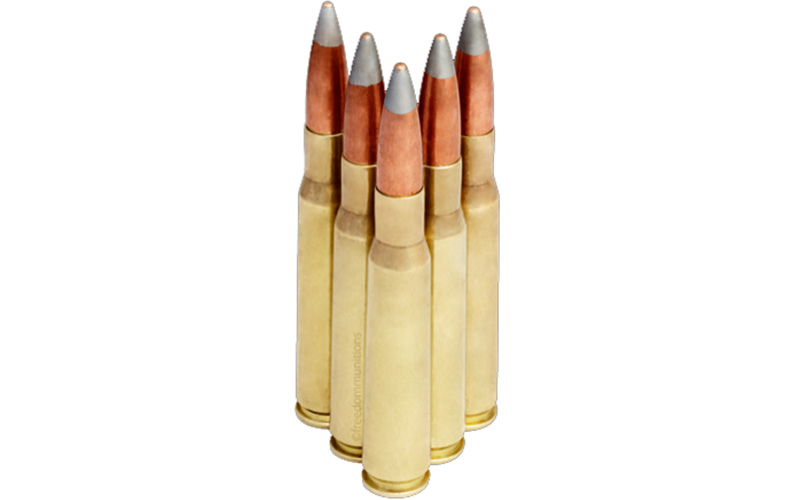
One of the benefits of .50 BMG is all the different kinds of projectiles that normally just aren't available in other calibers, especially the selection of .50 BMG armor piercing ammunition that's available to the civilian market.
Want to punch holes in stuff and set it on fire? Freedom Munitions API (Armor Piercing Incendiary) is made to do both, with a 647-grain bullet loaded to 2,750 fps. This would be the ideal for barrier defeat…just be careful of the environment you shoot it in.
Freedom Munitions sells a variety of .50 BMG AP (including armor-piercing tracers!) and the API load is fairly good value for money at $450 per box of 150. It's also available linked if you have a belt-fed to send it through.
Lake City M17 Tracer 643-Grain
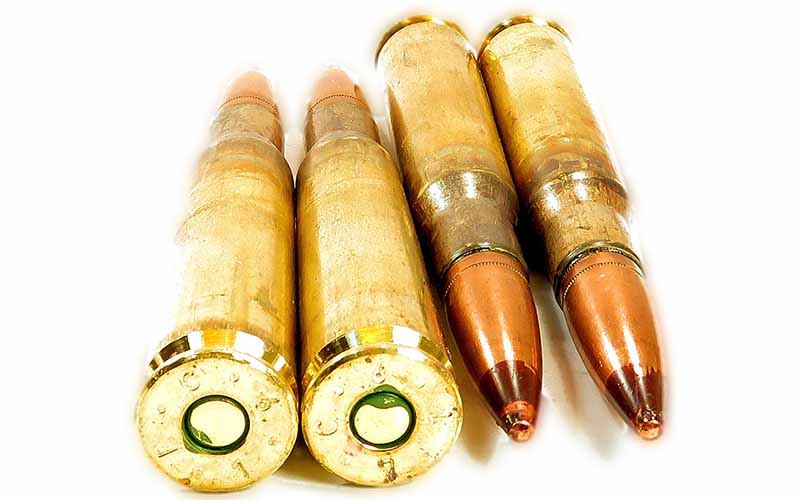
Another variety of surplus .50 BMG ammo to look for if you want to get into the really cool stuff is Lake City M17 643-grain tracer. It will look like death warmed over, with obvious signs of annealing (required by military contract) and mixed tips (some painted, some not) so don't get your hopes up for picture-perfect.
What you can expect is a .50 BMG tracer round, with a typical cost of just under $3 per from most outlets. However, exercise extreme discretion while firing it as the pyrotechnic charge that creates the trace burns at very high temperatures and it has caused wildfires.
More On .50 BMG Ammo And Rifles:
- Ammo Brief: Going The Extra Mile With .50 BMG
- Handloading The .50 BMG
- The .50-Caliber Remington R2Mi
- Towsley On Target: .50 BMG Guns

Next Step: Get your FREE Printable Target Pack
Enhance your shooting precision with our 62 MOA Targets, perfect for rifles and handguns. Crafted in collaboration with Storm Tactical for accuracy and versatility.
Subscribe to the Gun Digest email newsletter and get your downloadable target pack sent straight to your inbox. Stay updated with the latest firearms info in the industry.

![Best Concealed Carry Guns In 2025 [Field Tested] Wilson Combat EDC X9S 1](https://gundigest.com/wp-content/uploads/Wilson-Combat-EDC-X9S-1-324x160.jpg)


![Best 9mm Carbine: Affordable PCCs [Tested] Ruger Carbine Shooting](https://gundigest.com/wp-content/uploads/Ruger-Carbine-Shooting-100x70.jpg)
![Best AR-15: Top Options Available Today [Field Tested] Harrington and Richardson PSA XM177E2 feature](https://gundigest.com/wp-content/uploads/Harrington-and-Richardson-PSA-XM177E2-feature-100x70.jpg)

Do note that the velocities these rounds are rated at are always from a 45-inch barrel. In the more common 30 – 36 inch range, they will actually be 200 – 300 or so lower.